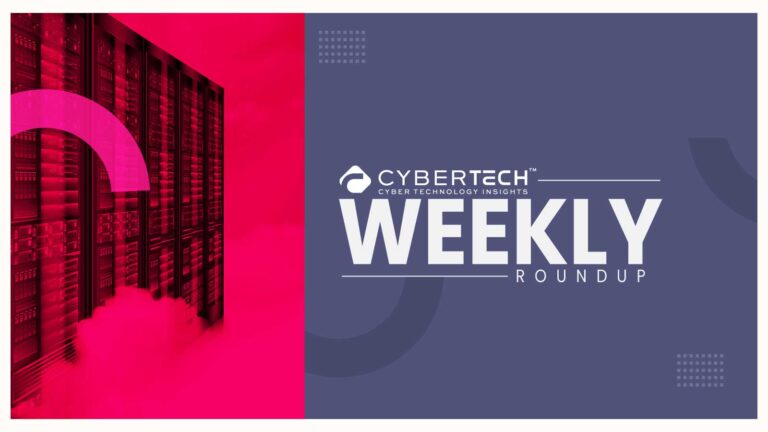AI-powered penetration tools are reaching a critical inflection point in cybersecurity. The release of Villager, an AI-driven penetration testing framework linked to a China-based developer, highlights this shift. Uploaded to the PyPI repository in July 2025, the tool has already been downloaded nearly 11,000 times—raising concerns it may follow the trajectory of Cobalt Strike. This red-teaming framework transitioned from legitimate use to widespread abuse by threat actors.
Unlike its predecessors, Villager is AI-native, automating complex red-team workflows and significantly lowering the barrier for adversaries. Tasks that once took weeks—reconnaissance, exploit chaining, and lateral movement—can now be executed in hours or minutes. This marks a critical shift: AI-assisted offense is no longer theoretical—it is operational, scalable, and increasingly accessible. The rapid adoption of tools like Villager demonstrates how quickly sophisticated capabilities can spread, compressing attacker dwell time and challenging defenders to respond in real time.
Top CyberTech Insights: DoD Greenlights Parallel Works Hybrid Multi-Cloud HPC Platform with ATO Approval
Our analysts spoke to industry leaders to understand how AI-powered penetration tools present a paradigm shift in 2025-2026. The CyberTech Top Voice program for this story includes:
- Casey Ellis, Founder at Bugcrowd
- Randolph Barr, Chief Information Security Officer at Cequence Security
- Jason Soroko, Senior Fellow at Sectigo
Key Trends Shaping the Threat Landscape
AI Offense at Scale
The most significant shift in today’s threat landscape is the acceleration of attack cycles driven by AI. What once took weeks of reconnaissance, manual scripting, and iterative testing can now be compressed into hours—or even minutes.
At the time of writing this story, we spoke to Casey Ellis, Founder at Bugcrowd. Casey said, “Hackers, both helpful and malicious, have been using AI to improve their effectiveness ever since generative AI became generally available to the public. AI-powered tools and frameworks that simplify otherwise complex and technical tasks started popping up at around the same time and have since proliferated. The appearance of a Chinese-backed tool into the mix is noteworthy, given the great power competition between China and the West both in AI and in cyberspace – but shouldn’t come as a surprise.”
Casey added, “The important takeaway here is that AI-assisted offense is here, has been here for quite some time now, and is here to stay. The net effect of this, as called out by the Straiker paper, is the availability of increasingly powerful capabilities to a far broader potential audience of users. The important thing for defenders to remember is that these tools are also available to those who hack in good faith, and that they should be leaning heavily on AI-assisted hacker-powered feedback to understand the implications of this shift in offensive capability going forward.”
Cybersecurity Trends and Leadership: Cybersecurity for Good: Nonprofits That Safeguard Our Digital Lives
Compression of Attacker Dwell Time
Traditionally, adversaries would spend extended periods inside a compromised environment to understand network topology, escalate privileges, and move laterally. With AI-driven automation, these tasks can be executed with near-instantaneous orchestration.
- Example: AI-assisted exploit frameworks can automatically scan for unpatched vulnerabilities, chain multiple exploits, and adapt payload delivery in real time—significantly reducing the time defenders have to detect and respond.
Democratization of Advanced Capabilities
Tactics once reserved for nation-state actors are now readily available to cybercriminal groups, hacktivists, and even low-skilled threat actors.
- Villager on PyPI demonstrates this trend: a publicly accessible, AI-powered penetration testing tool that enables advanced attack workflows at scale.
- Similarly, tools like HexStrike AI are already being probed by adversaries to weaponize recently disclosed vulnerabilities without requiring custom-built exploits.
From Custom to Commodity
We’ve seen this before with Cobalt Strike—initially developed for legitimate red-team use but quickly adopted by ransomware gangs as their tool of choice. The AI-native evolution of such frameworks is even more concerning. With automation and adaptive learning embedded, the barriers of technical skill, cost, and time are rapidly collapsing.
Randolph Barr, Chief Information Security Officer at Cequence Security, said, “In the past, bad actors needed to invest time in building and testing their own tools, often collaborating underground and fine-tuning scripts to evade traditional defenses like antivirus and firewalls. What makes Villager and similar AI-driven tools like HexStrike so concerning is how they compress that entire process into something fast, automated, and dangerously easy to operationalize.”
Randolph added, “AI fundamentally lowers the barrier to executing effective attacks, especially when the tooling is readily available on public repositories, such as PyPI. We’ve seen this play out before with Cobalt Strike, which was developed for legitimate red teaming but quickly became a staple in the attacker’s toolkit. Villager appears to be on a similar path, only this time, it’s supercharged with AI-native orchestration.
While red teaming remains a valuable way for organizations to assess risk, defenders must now contend with adversaries who can mimic and evolve those same techniques at scale and speed. Unfortunately, many organizations are still struggling with security fundamentals like timely patching and visibility into exposed assets. AI won’t wait for them to catch up.
This is a clear wake-up call: it’s time to integrate AI-aware detection strategies, tighten supply chain controls, and ensure security teams are empowered with the same automation and orchestration capabilities that attackers are beginning to use.”
- Example 1: Generative AI models are being leveraged to create polymorphic malware—code that constantly mutates to evade detection, rendering traditional signature-based defenses nearly obsolete.
- Example 2: Darktrace has reported increases in AI-driven spear phishing campaigns, where large language models craft highly targeted emails at scale, indistinguishable from human communication.
Implications for Defenders
As AI offense scales, defenders can no longer rely on legacy detection timelines or human-only analysis. The response window has shrunk drastically. Security operations must adopt:
- AI-enhanced detection capable of spotting anomalies in real time.
- Automated response playbooks to contain threats as quickly as they emerge.
- Proactive deception strategies, such as deploying canary accounts and honeytokens, to slow down automated adversaries.
Supply Chain as a Prime Attack Vector
The software supply chain has emerged as one of the most vulnerable and exploited domains in cybersecurity. Public repositories like PyPI (Python Package Index), npm (Node Package Manager), and RubyGems have democratized software development, but they have also become high-value targets for adversaries.
Jason Soroko, Senior Fellow at Sectigo, said, “Villager signals a shift from manual red teaming tools to fast AI-powered frameworks that lower the barrier to entry and compress attacker dwell time, so security leaders should treat it as an accelerant rather than a novelty.
Focus first on package provenance by mirroring PyPI, enforcing allow lists for pip, and blocking direct package installs from build and user endpoints. Lock down Python execution with application control and alert on unusual interpreter launches that spawn network discovery or credential tools, then pair that with strict egress controls. Monitor for burst-like scanning, chained exploit attempts, and autonomous retuning behavior.
Harden identity with least privilege and short-lived credentials since automated tools pivot quickly once they land, and make secret scanning and rapid patch pipelines non-negotiable to shrink windows of exposure. Update detections to include process lineage for Python, high-rate HTTP error patterns, and repeated probe adapt cycles, and add canary services and deception hosts to divert automated recon.
Establish model and agent governance for any internal use of offensive automation to avoid accidental leakage of techniques and credentials. Treat this as a wake-up to modernize controls around scripting environments, supply chain hygiene, identity, and response speed so the advantage of automation does not belong only to the attacker.”
The availability of AI-driven penetration tools such as Villager on PyPI illustrates just how quickly sophisticated capabilities can spread to both legitimate users and malicious actors.
Public Repositories as Distribution Hubs
Threat actors are increasingly leveraging public code repositories to distribute malware, trojans, and offensive frameworks disguised as legitimate packages.
- Example 1: In 2023, attackers uploaded malicious Python packages with typosquatted names (e.g., “reqeusts” instead of “requests”), which secretly harvested credentials from infected systems.
- Example 2: The npm event-stream incident saw a widely used package compromised to include a backdoor, impacting thousands of downstream projects before detection.
With AI-native tools like Villager, the risk multiplies—sophisticated red-team frameworks are now just a pip install command away.
Supply Chain Exploits Have Geopolitical Impact
Some of the largest cyber incidents in recent history have stemmed from supply chain compromises:
- SolarWinds (2020): A trojanized software update was weaponized by nation-state actors to compromise thousands of organizations globally.
- Kaseya VSA (2021): An IT management software provider was exploited to deliver ransomware at scale, impacting hundreds of managed service providers and their customers.
AI now has the potential to automate reconnaissance across entire supply chains, identifying weak links, injecting malicious code, and spreading at unprecedented speed.
Defensive Countermeasures Must Evolve
Traditional vulnerability scanning alone is no longer sufficient. Defenders must enforce zero-trust principles and implement rigorous package provenance and integrity checks to mitigate these risks.
- Package Provenance: Mirror trusted repositories internally, verify digital signatures, and restrict direct pulls from public sources.
- Zero-Trust Pipelines: Every build process should validate dependencies against an allowlist and scan for indicators of tampering.
- Runtime Protections: Monitor unusual interpreter behavior (e.g., Python spawning network processes) and enforce application controls to detect malicious package activity in real time.
The Future of Supply Chain Defense
AI-assisted adversaries will continue to exploit the openness of public repositories to seed malicious tools.
As Gartner forecasts that 45% of organizations worldwide will experience software supply chain attacks by 2025, defenders must treat repositories as untrusted ecosystems by default.
Building resilient, monitored, and verifiable pipelines is no longer optional—it is a board-level mandate.
Defensive AI Must Match Offensive AI
As AI-driven offensive capabilities accelerate, defenders cannot afford to rely on legacy tools, static rules, or human-only intervention. The reality is clear: if attackers are using AI to compress dwell time and scale their operations, security teams must adopt AI-driven defense to match that speed and sophistication.
AI-Driven Detection and Threat Hunting
AI-powered adversaries can morph payloads, adapt tactics in real time, and evade signature-based detection. To counter this, defenders require systems capable of identifying anomalies, spotting behavioral deviations, and correlating threat signals across vast data sets at machine speed.
- Example 1: Platforms like Darktrace and Microsoft Security Copilot leverage machine learning to detect subtle anomalies, such as lateral movement patterns or burst-like credential attacks, before they escalate.
- Example 2: Financial institutions are now using AI-powered behavioral biometrics to detect account takeover attempts that bypass multi-factor authentication.
Automated Patching and Response
Manual patching cycles are insufficient in the AI era.
Offensive tools like Villager and HexStrike AI can weaponize new CVEs within hours of disclosure, leaving organizations dangerously exposed.
- Example 1: During the Log4j vulnerability crisis, attackers began mass exploitation within 48 hours of disclosure, while many enterprises took weeks to remediate. With AI-driven exploit kits, that window shrinks even further.
- Best Practice: Security teams must deploy automated remediation pipelines capable of applying fixes, isolating vulnerable assets, or rolling out compensating controls in real time.
Deception and Adversary Engagement
AI adversaries thrive on speed and automation. One effective countermeasure is to waste their time and resources through deception technologies.
- Example: Canary tokens, honey accounts, and decoy infrastructure can mislead automated reconnaissance tools like Villager, slowing down attackers while alerting defenders.
- Example: Some advanced SOCs are deploying AI-powered deception platforms that dynamically generate fake assets to confuse automated scanning and probing.
Real-Time Resilience as a Business Imperative
The critical takeaway is that resilience now depends on real-time action. Delayed detection or manual containment is no longer acceptable when adversaries can compromise systems in minutes.
- Industry Movement: Gartner predicts that by 2027, 60% of enterprises will rely on AI-augmented security operations centers (SOCs) to achieve the required speed of response.
- Executive Mandate: Boards and CISOs must prioritize investments in AI-enabled defenses not as optional upgrades but as core business risk management.
Strategic Imperatives for Security Leaders
The rise of AI-native offensive tools demands a recalibration of enterprise security priorities. Security leaders must not only deploy new technologies but also modernize governance, culture, and board-level risk framing. The following imperatives are essential for organizations seeking to maintain resilience in this evolving landscape.
Govern AI Usage
AI-powered offensive tools are no longer confined to adversaries—security teams also leverage them for red teaming and vulnerability research. Without proper governance, these capabilities can inadvertently create insider risks or data leaks.
- Example: AWS has introduced Guardrails for Generative AI within Amazon Bedrock, designed to enforce responsible AI usage and prevent exposure of sensitive data during AI-assisted development.
- Application for Security Leaders: Establish internal AI-use policies that govern when and how AI tools can be used for penetration testing, vulnerability scanning, and incident simulation. Create model governance frameworks to avoid unintentional disclosure of proprietary techniques or credentials.
Modernize Identity Security
Identity has become the new perimeter. Attackers increasingly exploit credential misuse rather than traditional perimeter breaches, and AI-powered automation accelerates these attempts.
- Example 1: Cisco’s Duo Security now integrates risk-based adaptive authentication that evaluates device health, geolocation, and user behavior before granting access.
- Example 2: Palo Alto Networks’ Prisma Access emphasizes identity-driven security policies, with integrated support for just-in-time access and short-lived credentials.
- Application for Security Leaders: Move beyond static MFA and enforce least-privilege access models. Integrate continuous secret scanning into DevSecOps pipelines and rotate credentials frequently to limit exploit windows.
Enhance Deception and Monitoring
Adversaries armed with AI-driven reconnaissance tools can rapidly scan, probe, and adapt. One effective countermeasure is to divert them into controlled, deceptive environments where their activity provides early-warning signals.
- Example: Palo Alto Networks offers AI-driven behavioral analytics that can detect anomalies in network traffic, while partners like Attivo Networks (now part of SentinelOne) provide deception platforms that deploy decoy credentials, servers, and applications to mislead attackers.
- Application for Security Leaders: Deploy canary tokens, honey accounts, and deception hosts across critical infrastructure. Use these as tripwires to catch reconnaissance activity that slips past perimeter defenses.
Accelerate Patch Management
AI-driven exploit frameworks can weaponize newly disclosed vulnerabilities in hours, making traditional 30-day patch cycles obsolete.
- Example 1: AWS Systems Manager’s Patch Manager enables automated, policy-driven patching across cloud and hybrid environments, reducing the reliance on manual intervention.
- Example 2: Cisco’s Kenna Security (now Cisco Vulnerability Management) applies predictive analytics to prioritize vulnerabilities based on real-world exploitability, ensuring critical flaws are remediated first.
- Application for Security Leaders: Implement real-time remediation pipelines that auto-apply patches, isolate unpatched assets, or roll out temporary compensating controls. Pair vulnerability prioritization with automation to reduce exposure windows dramatically.
Elevate Risk Conversations
Cyber risk is no longer confined to IT—it is a business risk with implications for revenue, customer trust, and market valuation. Boards must treat AI-native threats as part of enterprise risk governance.
- Example 1: Palo Alto Networks’ Unit 42 threat intelligence reports increasingly frame emerging AI-driven threats in terms of business resilience, not just technical vulnerabilities.
- Example 2: Cisco’s Security Outcomes Report emphasizes aligning cyber maturity with business performance metrics, highlighting how resilience translates into competitive advantage.
- Application for Security Leaders: Elevate the conversation with boards and executive teams by framing AI-powered threats in terms of brand trust, supply chain resilience, regulatory compliance, and shareholder value. Cybersecurity must move from being a technical agenda item to a core business resilience strategy.
The Bottom Line
The emergence of Villager highlights how quickly AI is reshaping the offensive landscape. Legitimate red-teaming frameworks can—and will—be adapted for malicious use at unprecedented speed. For defenders, the imperative is clear: evolve detection, automation, and governance strategies with the same urgency adversaries apply to AI-driven offense.
This is not a novelty.
It is a structural shift.
The future of cybersecurity will be defined by whether defenders can match the speed, scale, and sophistication of AI-native threats.
Frequently Asked Questions (FAQ)
What makes Villager different from tools like Cobalt Strike?
Villager is AI-native.
Unlike traditional frameworks, it automates reconnaissance, exploit chaining, and privilege escalation—compressing what once took weeks into hours. This makes it significantly more scalable and accessible.
Why is the release of Villager on PyPI so concerning?
Because PyPI is a public repository. Anyone—whether a legitimate researcher or a malicious actor—can download Villager with a single command. This democratizes access to nation-state–level offensive capabilities.
How do AI-powered penetration tools impact attacker dwell time?
Traditionally, attackers spent weeks or months inside a network before detection.
AI reduces this window dramatically by automating tasks like vulnerability scanning and lateral movement, giving defenders only hours to respond.
Are there real-world examples of supply chain risks tied to repositories like PyPI or npm?
Yes.
The 2023 Python typosquatting incidents (“reqeusts” vs. “requests”) and the npm event-stream compromise both show how attackers exploit public code repositories. Villager follows this trajectory, but with more sophistication.
How can defenders realistically counter AI-driven offense?
By adopting AI themselves.
This includes anomaly detection (e.g., Darktrace, Microsoft Security Copilot), automated patching pipelines (e.g., AWS Systems Manager, Cisco Vulnerability Management), and deception technologies like canary tokens or decoy servers.
Is automated patching really achievable at enterprise scale?
Yes.
Enterprises already use solutions like AWS Patch Manager and Cisco Kenna Security to automate vulnerability remediation. The key is integrating these into real-time workflows rather than relying on monthly patch cycles.
Why is deception technology important in the age of AI attacks?
AI thrives on speed and efficiency. By deploying decoys—fake credentials, honey accounts, or canary services—defenders can waste attacker resources while gaining valuable intelligence.
What role should boards and executives play in this shift?
AI-driven threats are not just IT concerns—they’re business risks. Boards must treat them as resilience and brand-trust issues, ensuring cyber investments are aligned with enterprise risk management.
Does this mean every AI red-teaming tool will eventually be abused?
History suggests yes. Cobalt Strike, Mimikatz, and now Villager all began as legitimate research or testing tools but became staples of criminal and nation-state operations. The AI-native layer only accelerates that trajectory.
What’s the single biggest takeaway for defenders?
Speed. The offense is now measured in hours, not months. Defenders must adopt AI-driven detection, automated patching, and real-time response—or risk being permanently outpaced.
Top CyberTech News and Analysis: CyberArk Names Omer Grossman CTO and Head of CYBR Unit; Appoints Ariel Pisetzky as CIO
ReliaQuest Introduces GreyMatter Transit: Real-Time Threat Detection Through Native Data Pipeline
To participate in our interviews, please write to our CyberTech Media Room at sudipto@intentamplify.com







